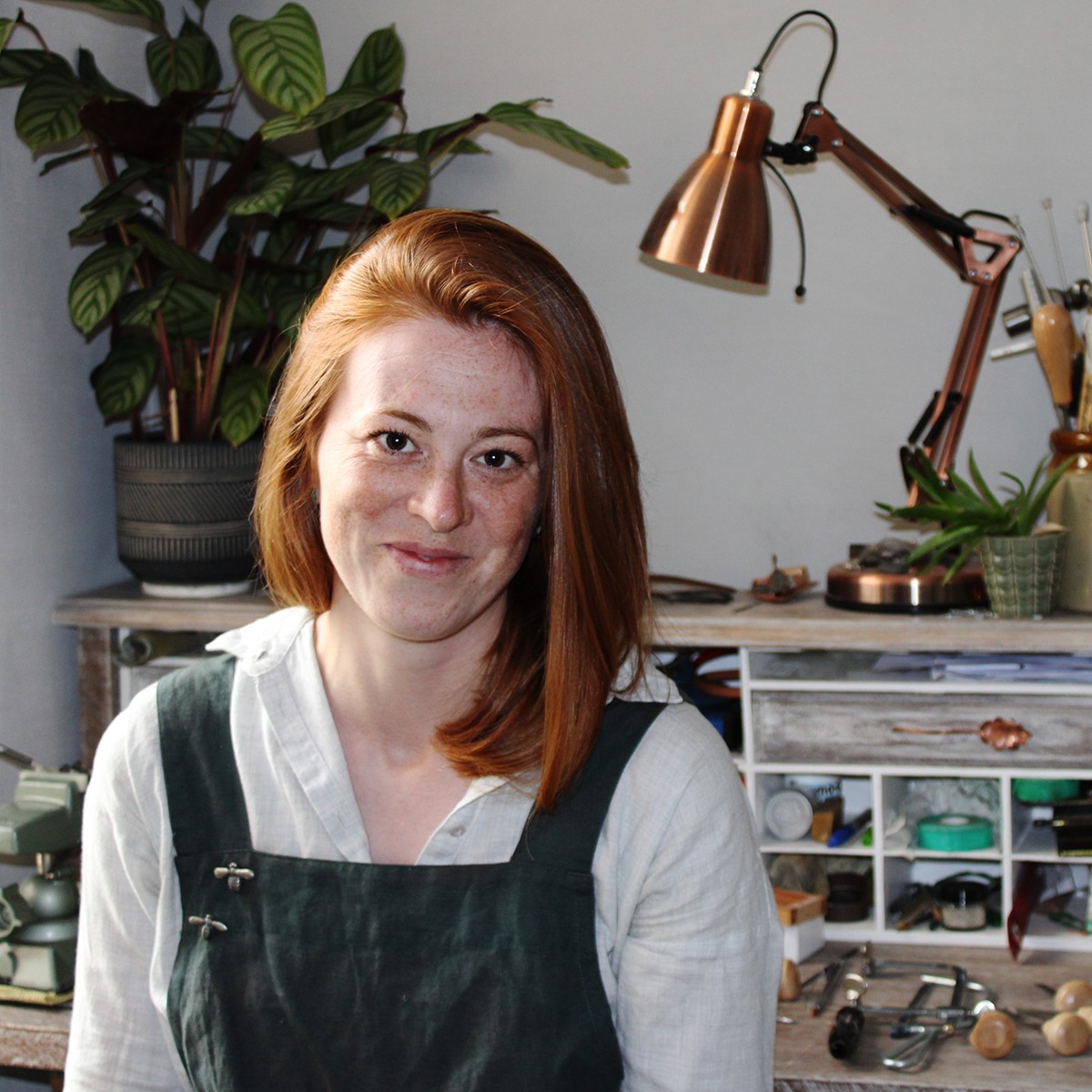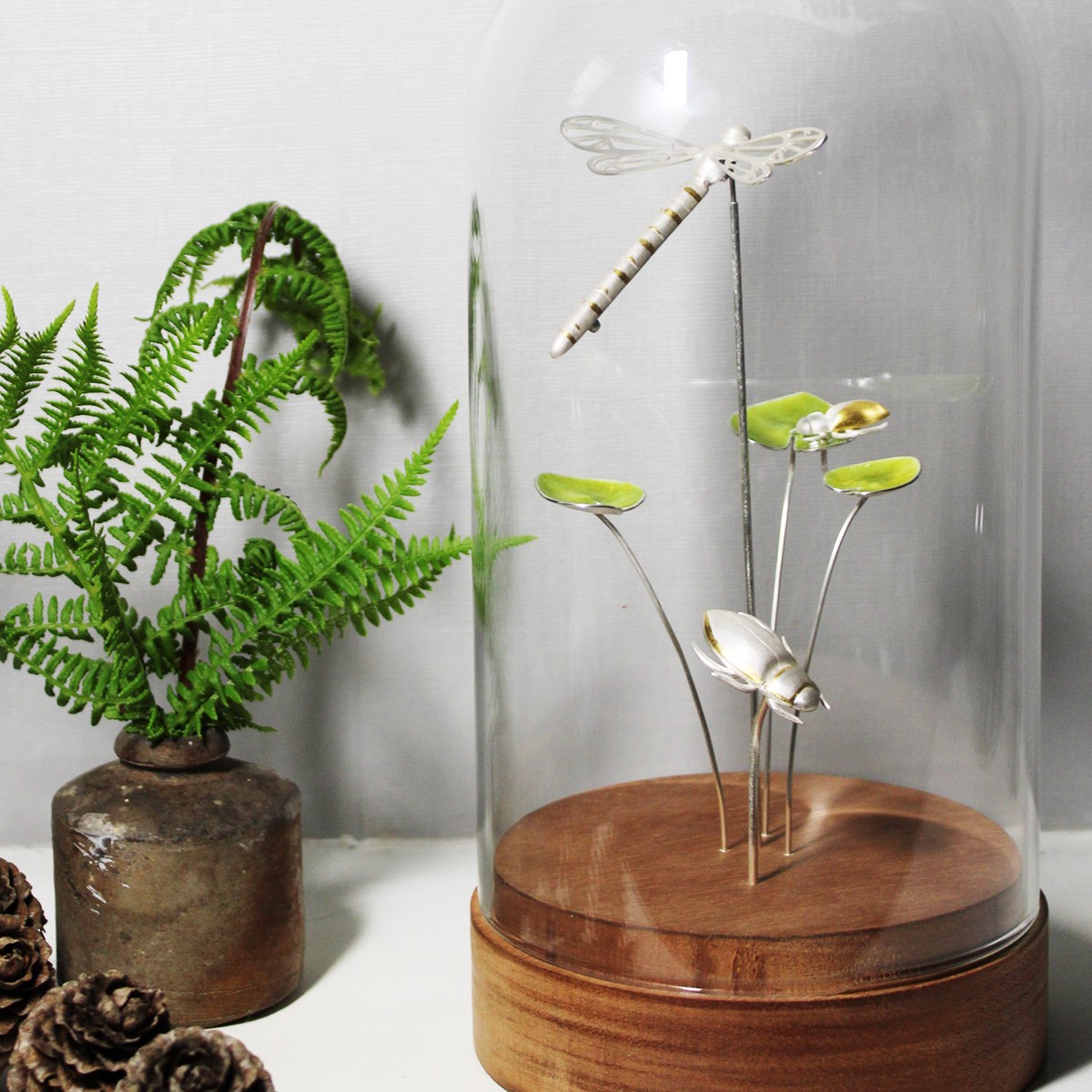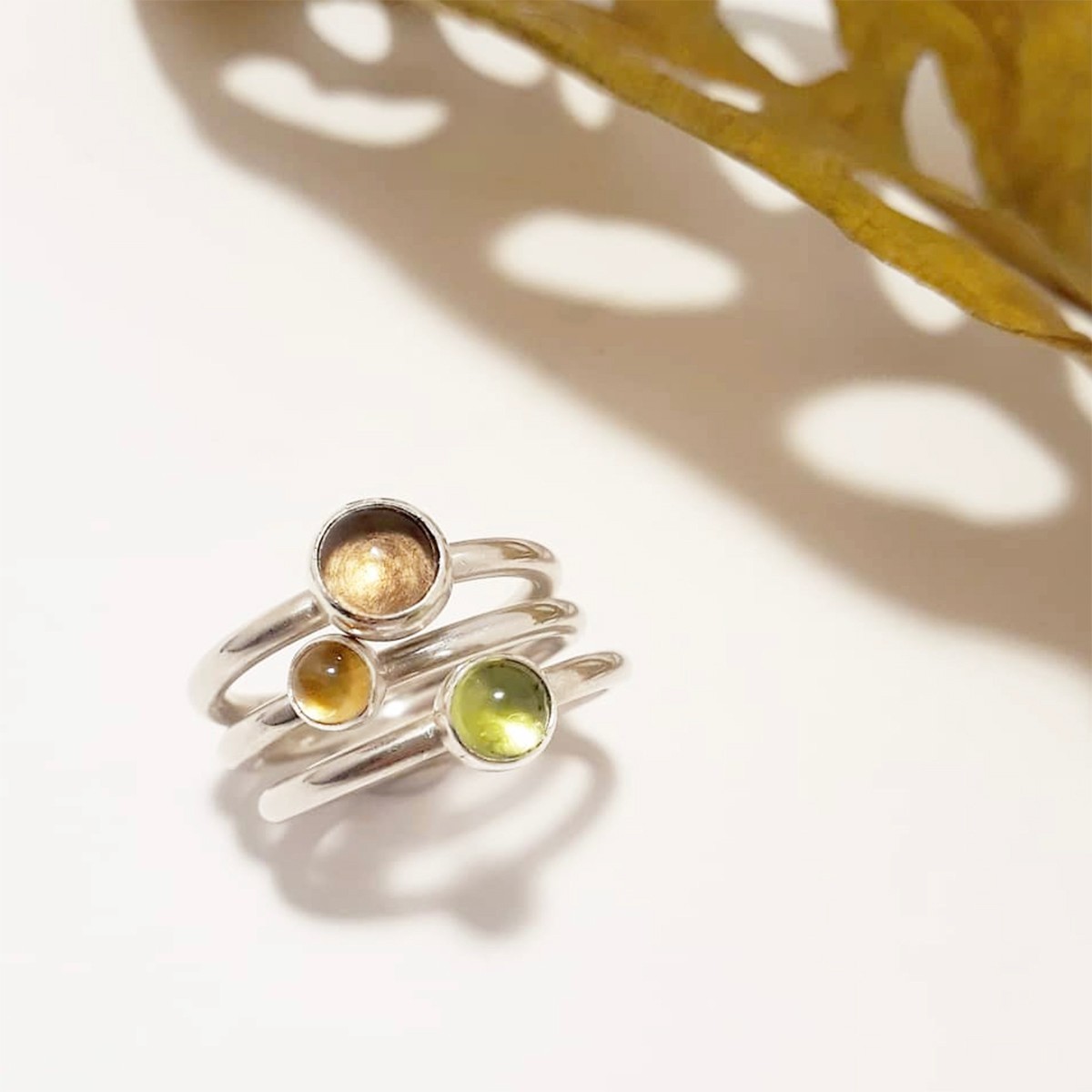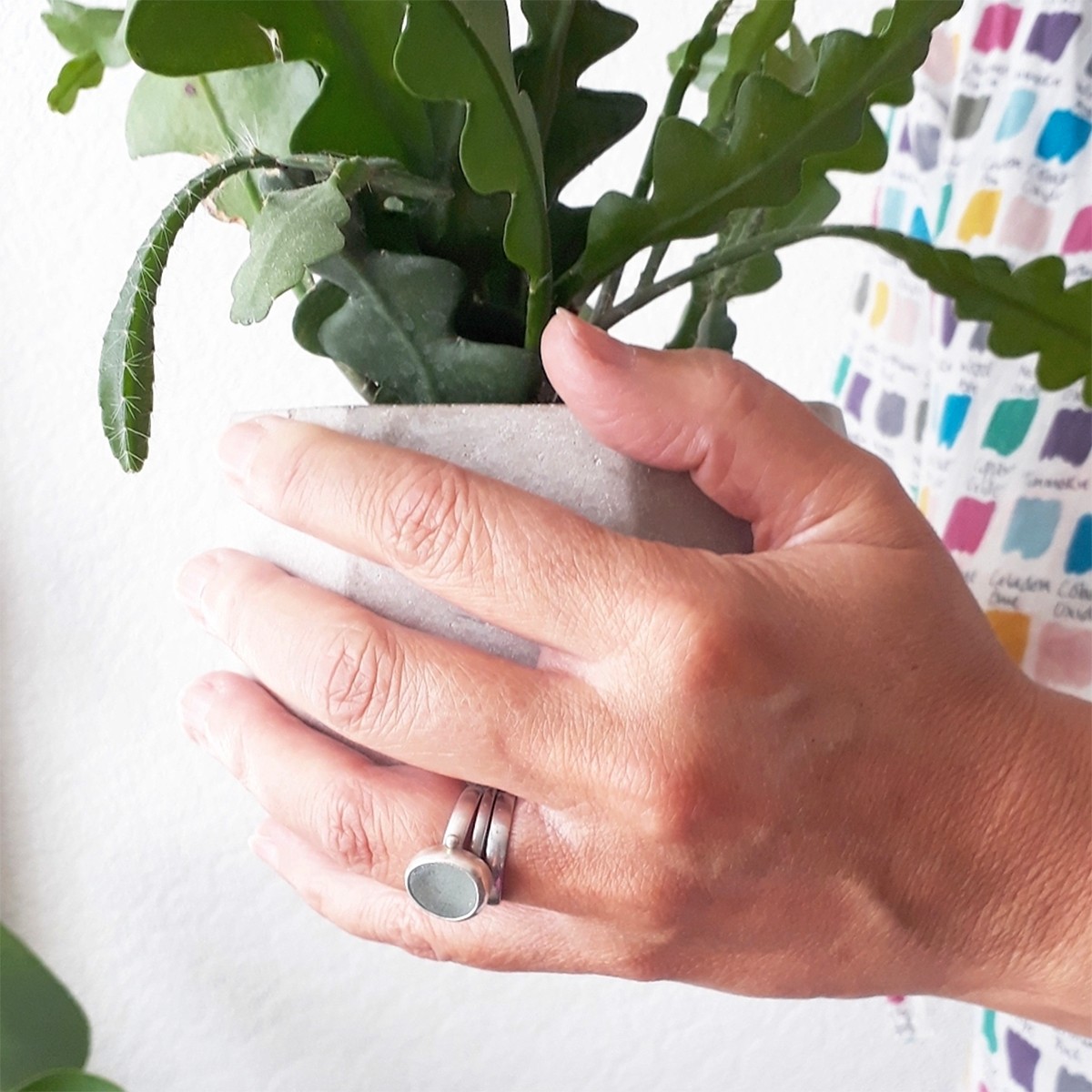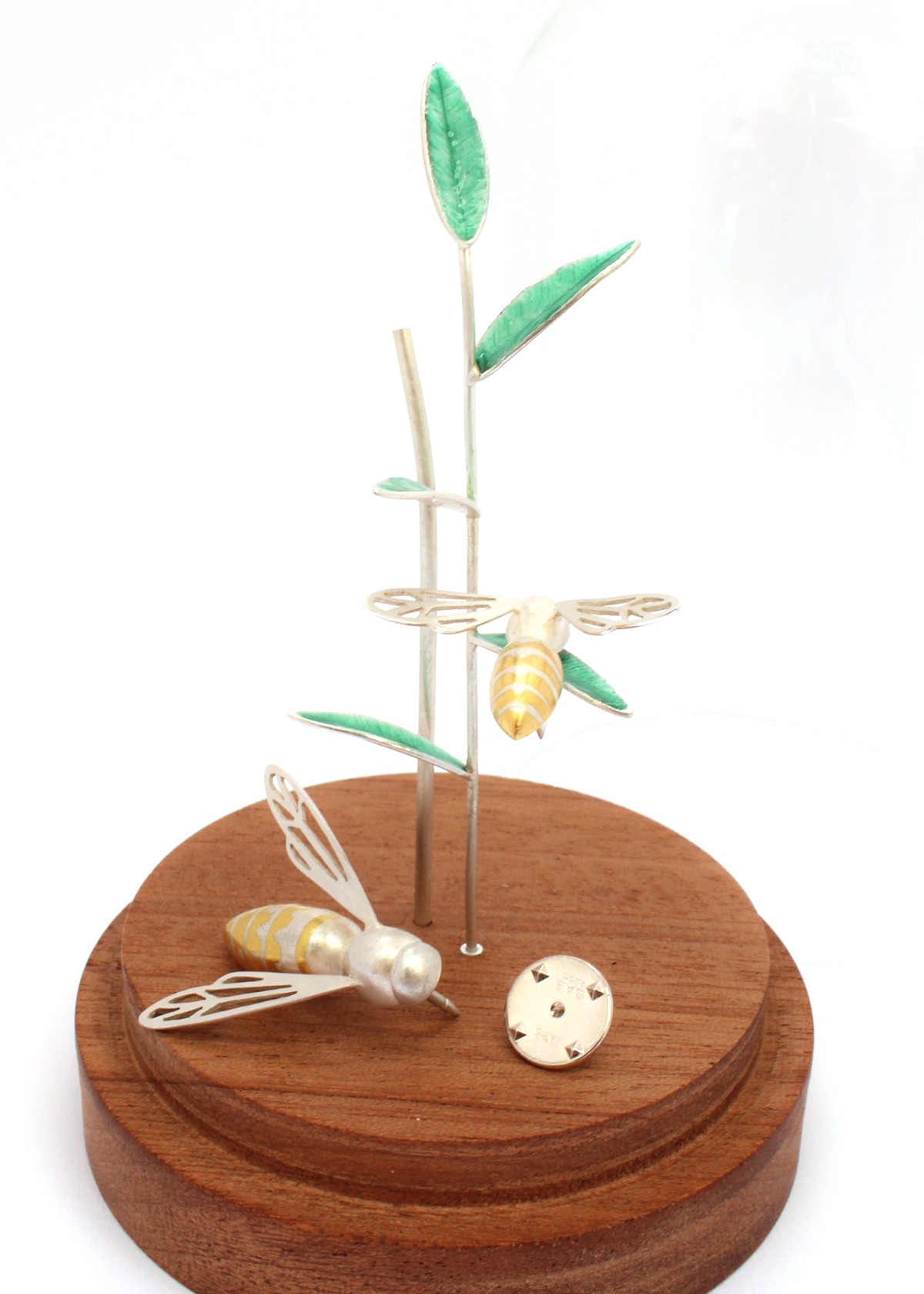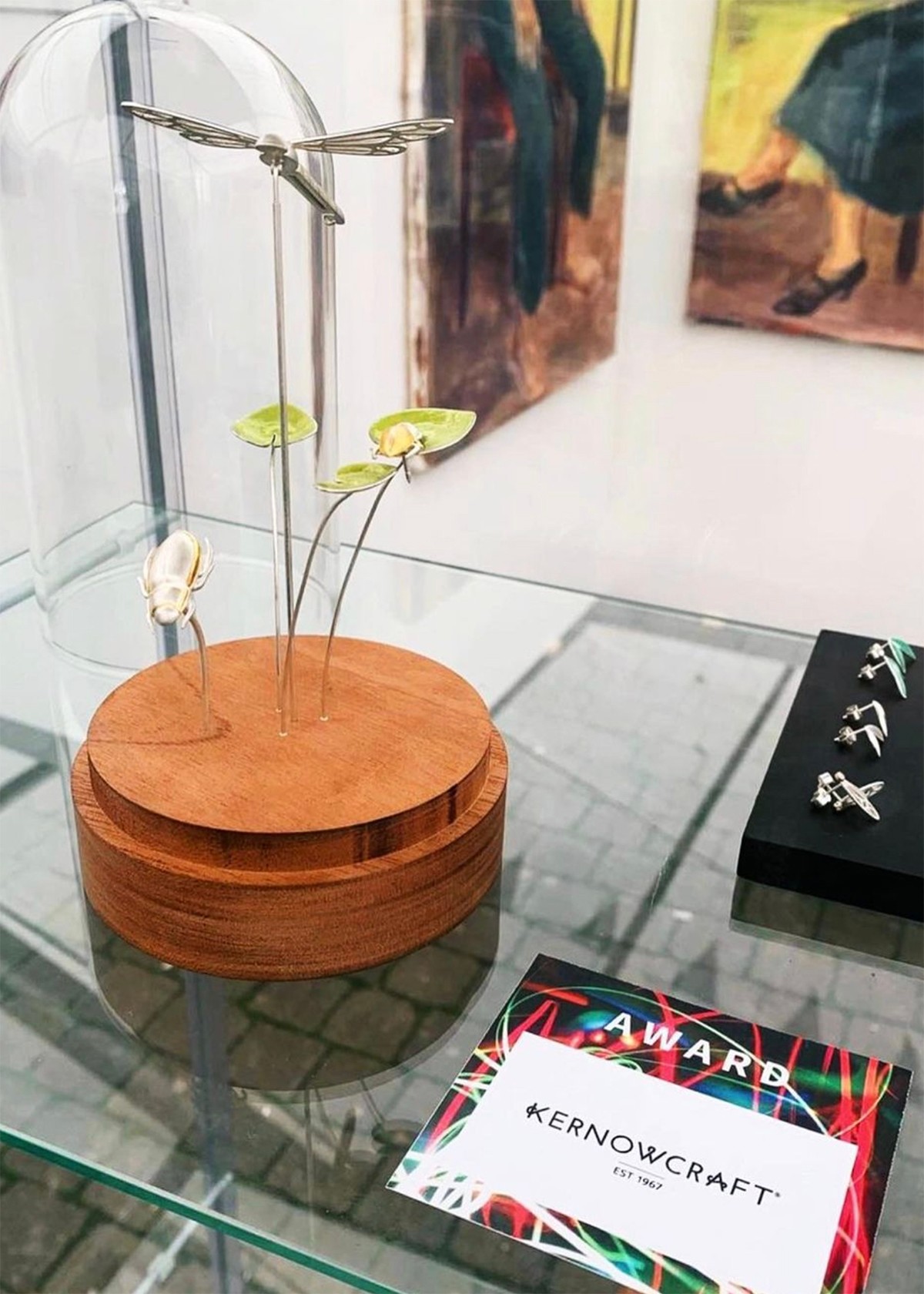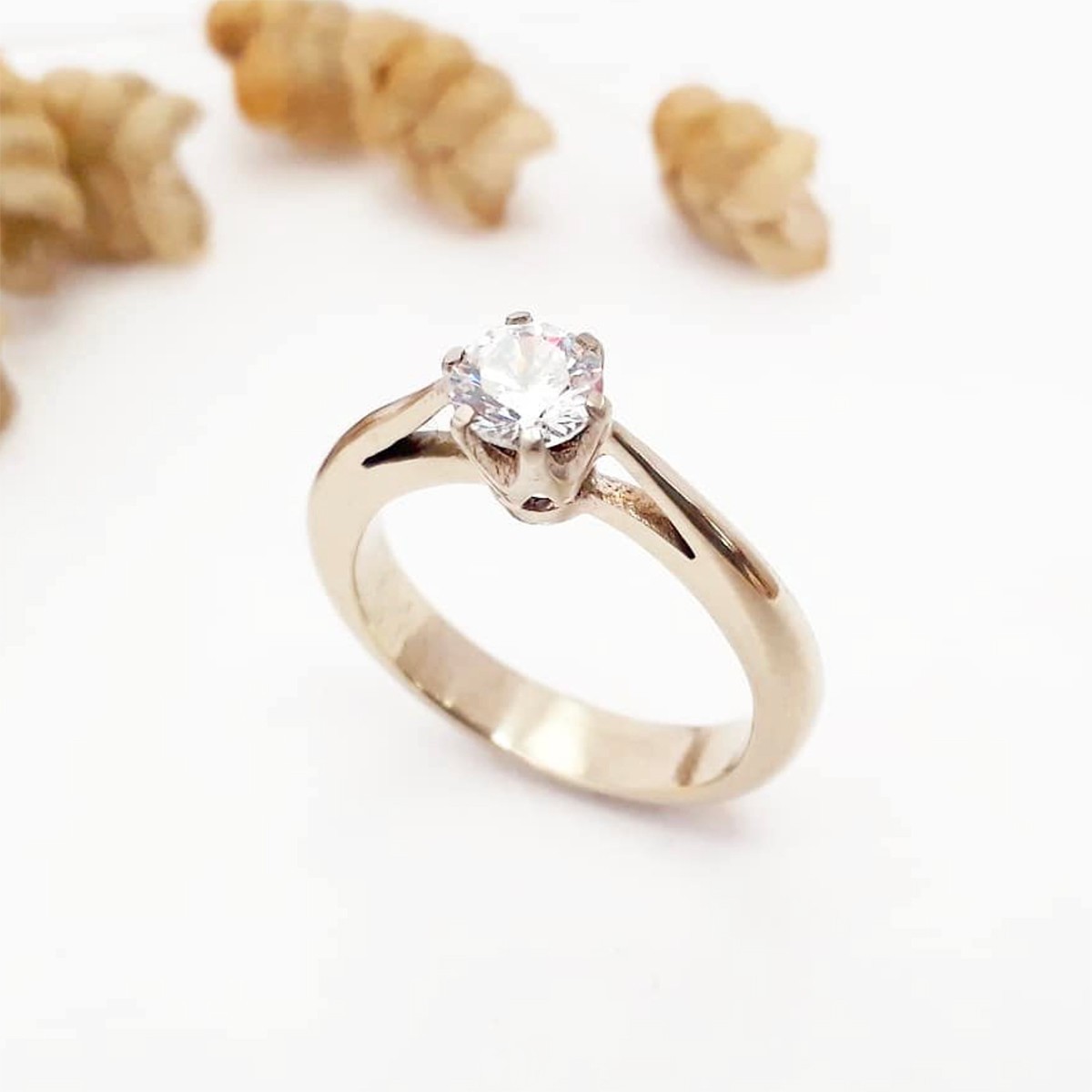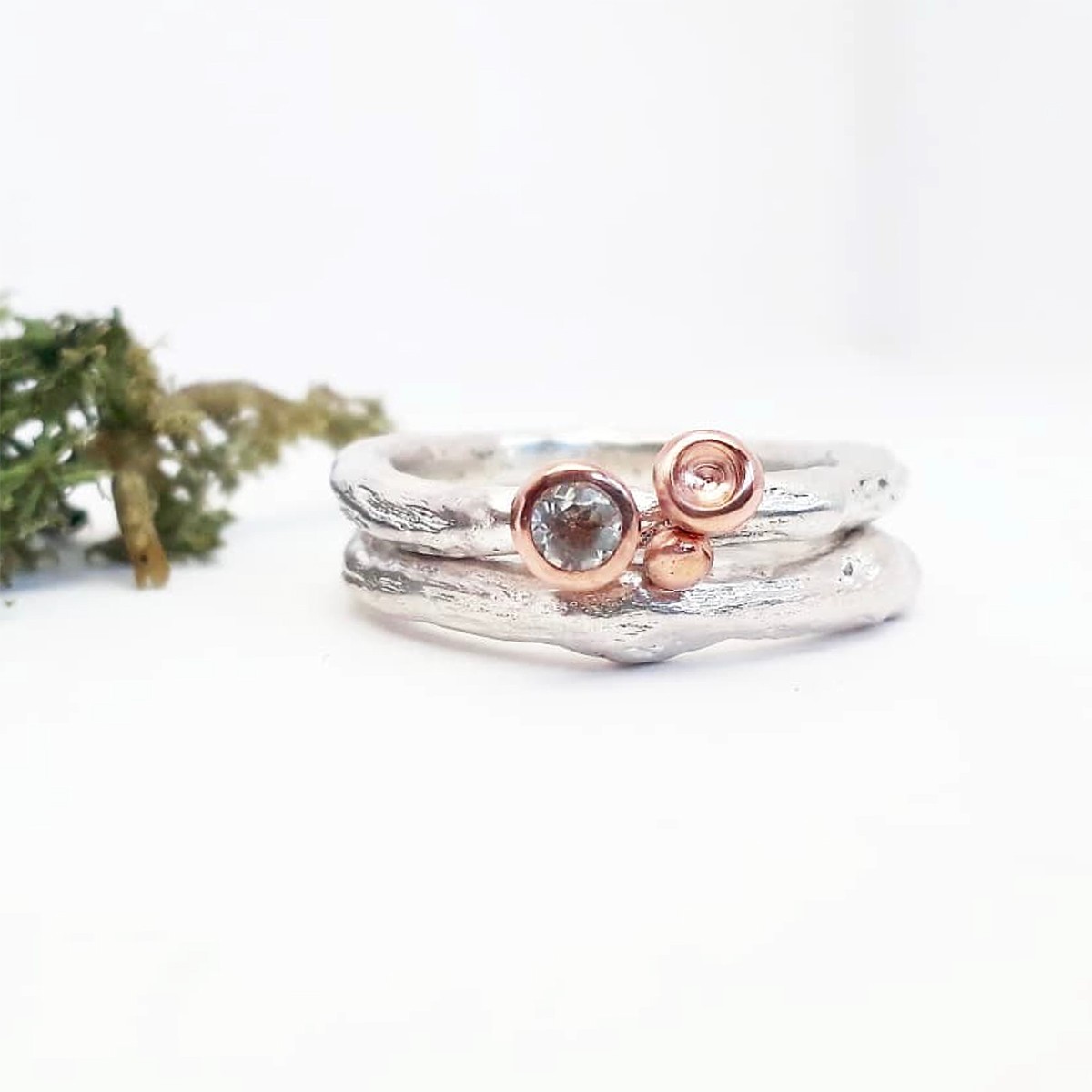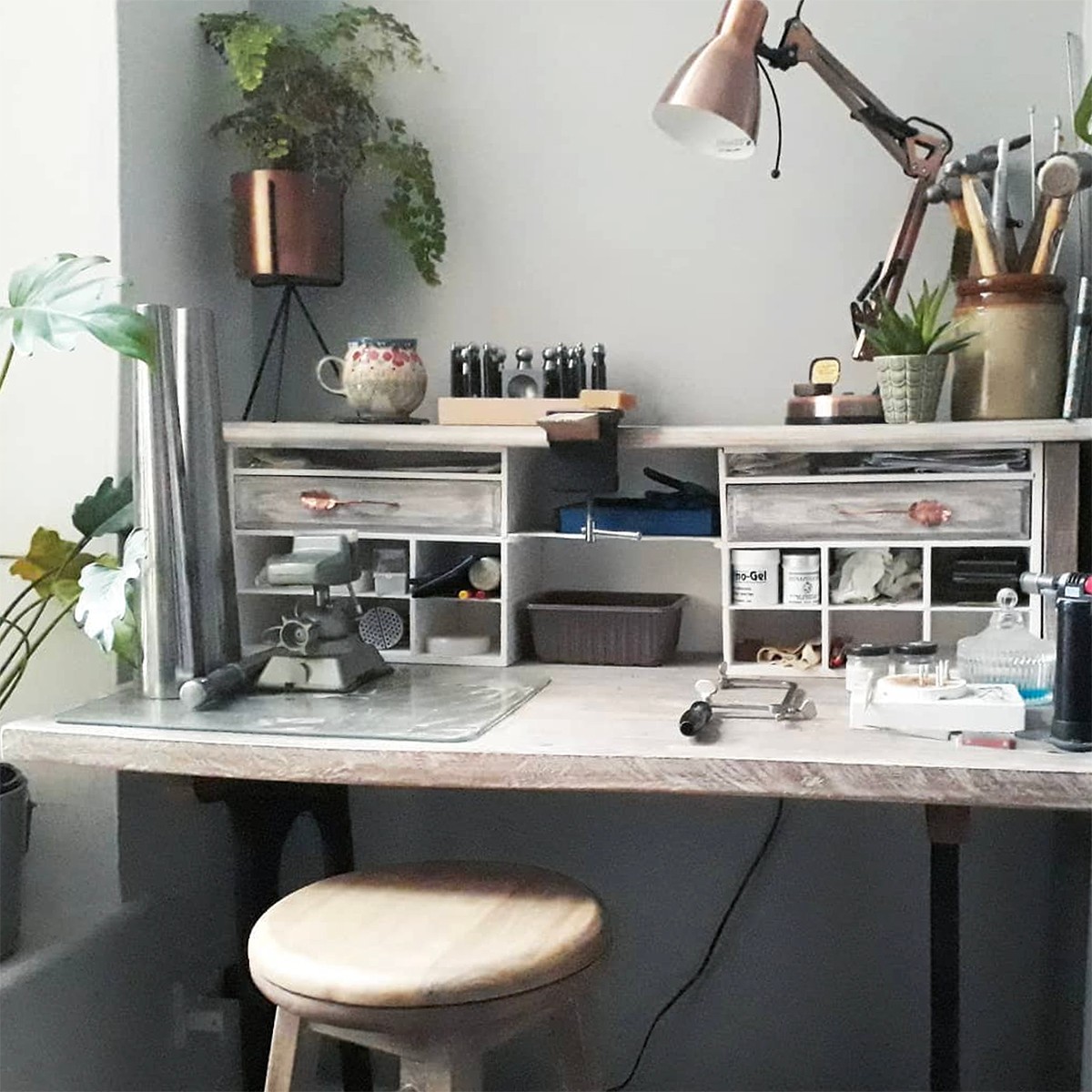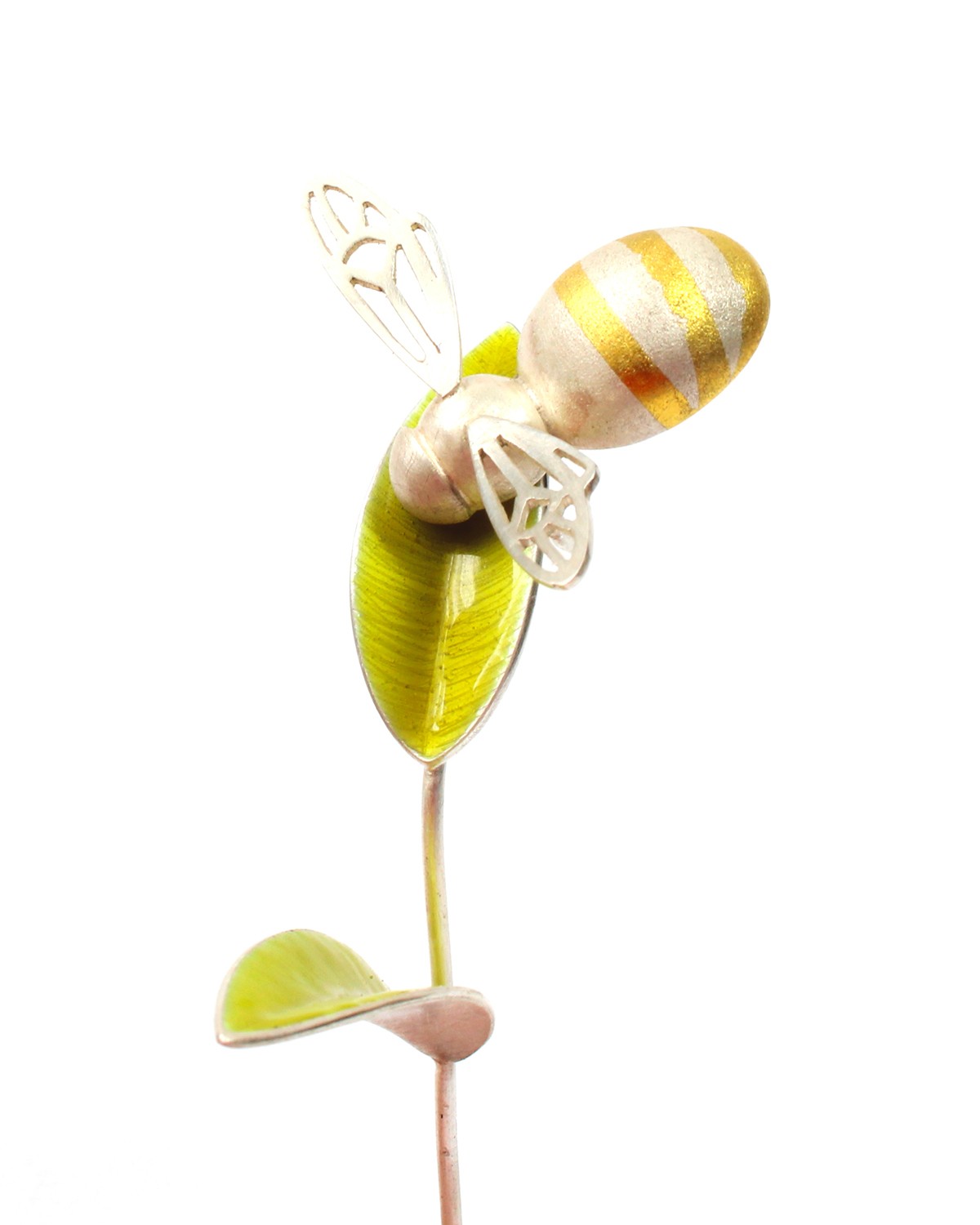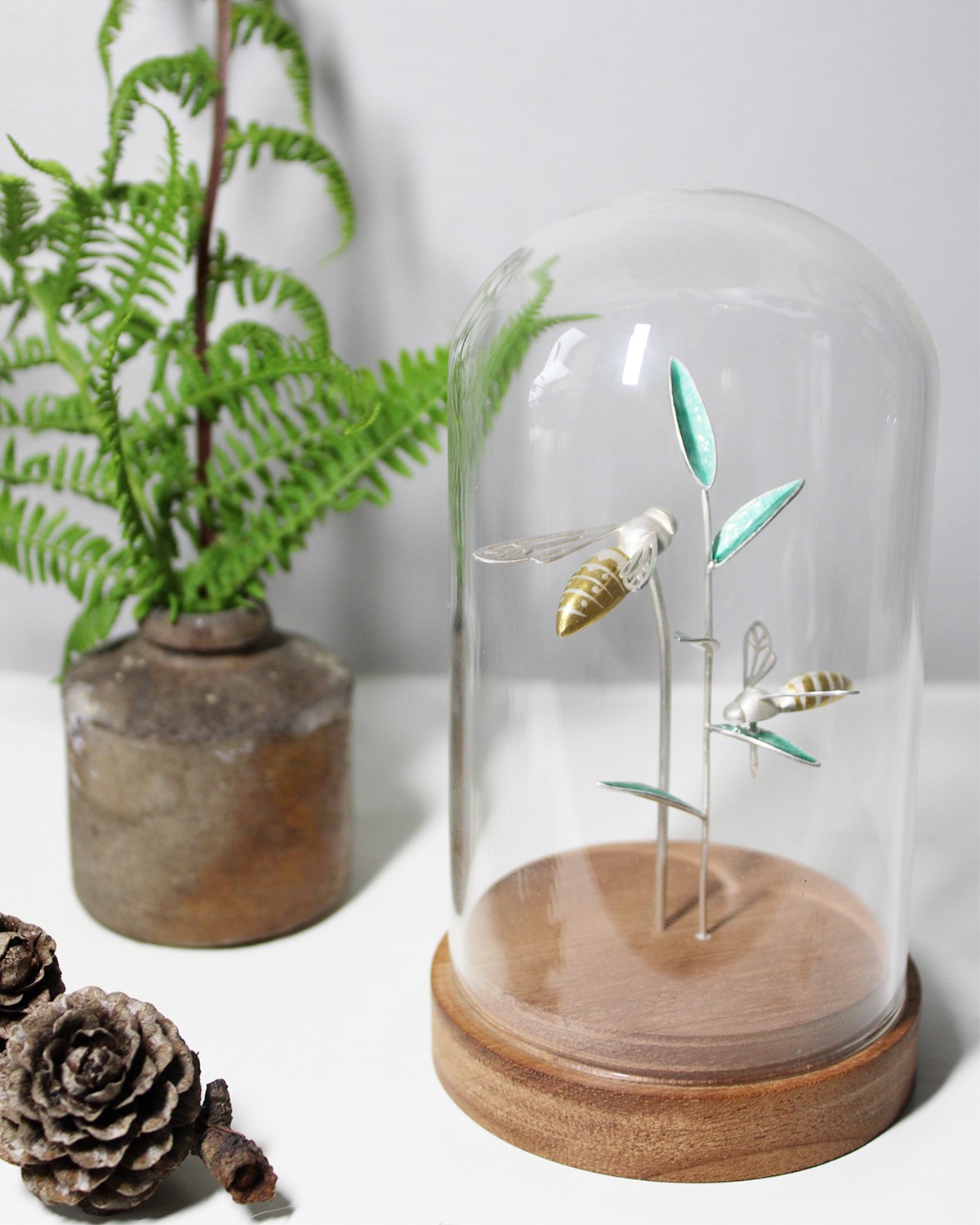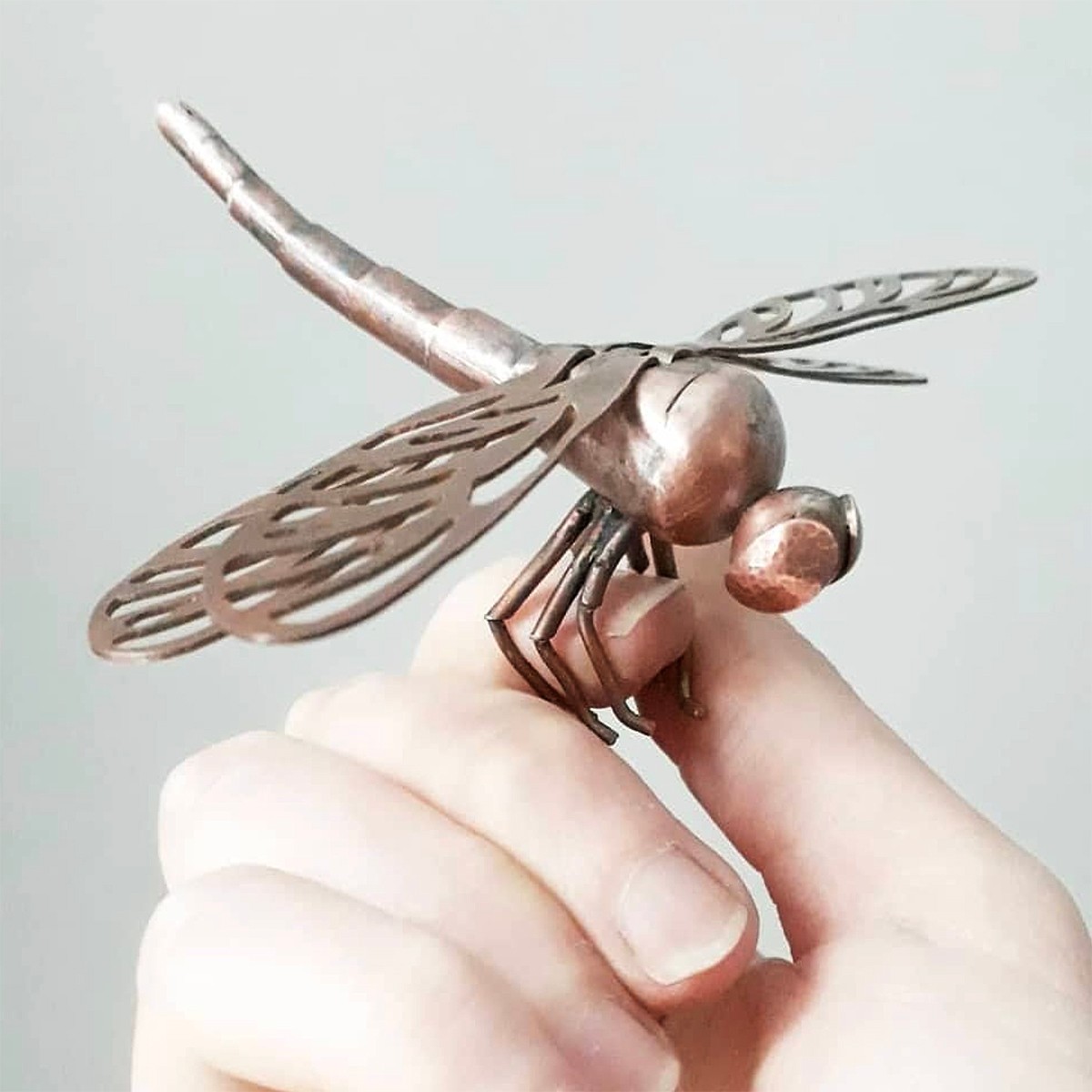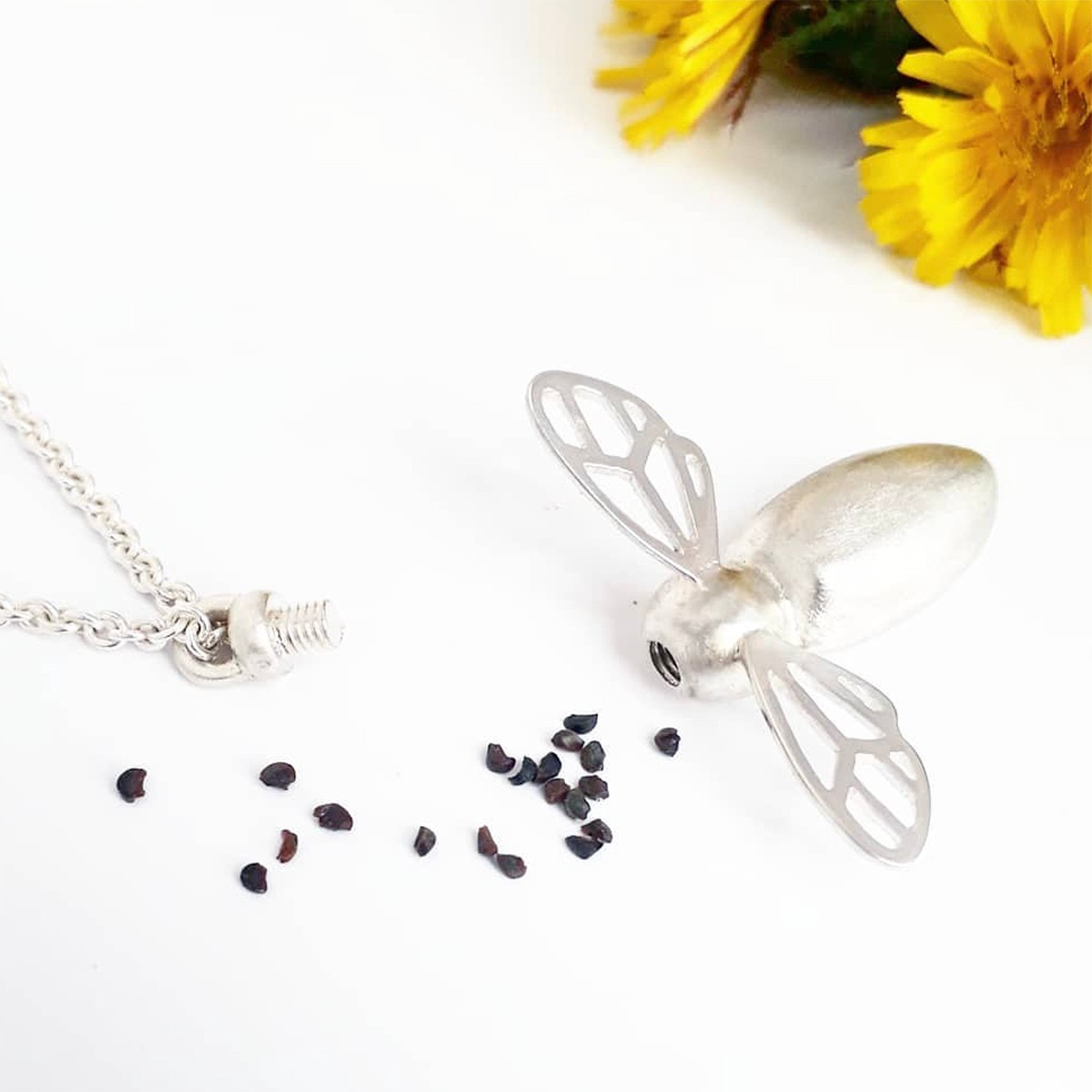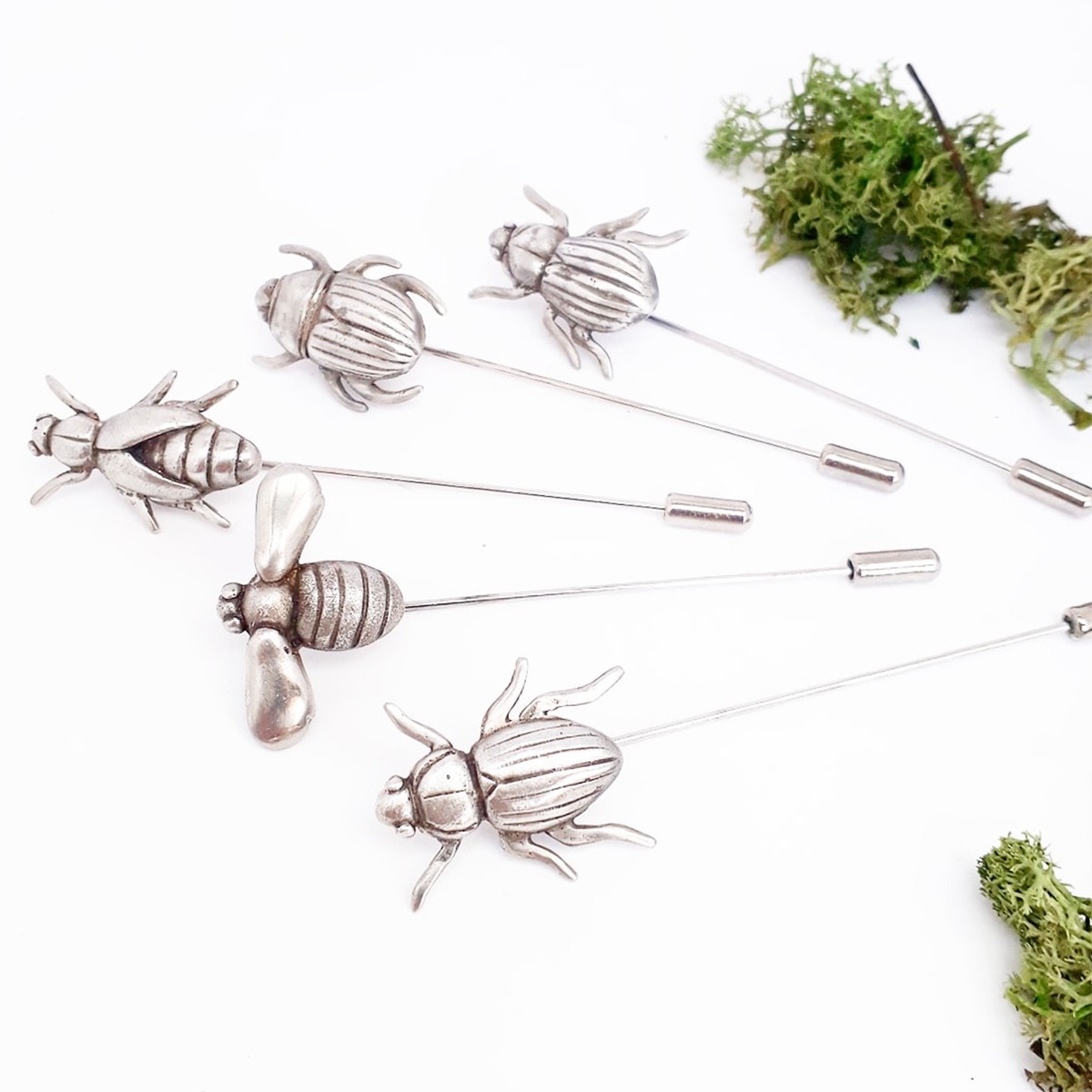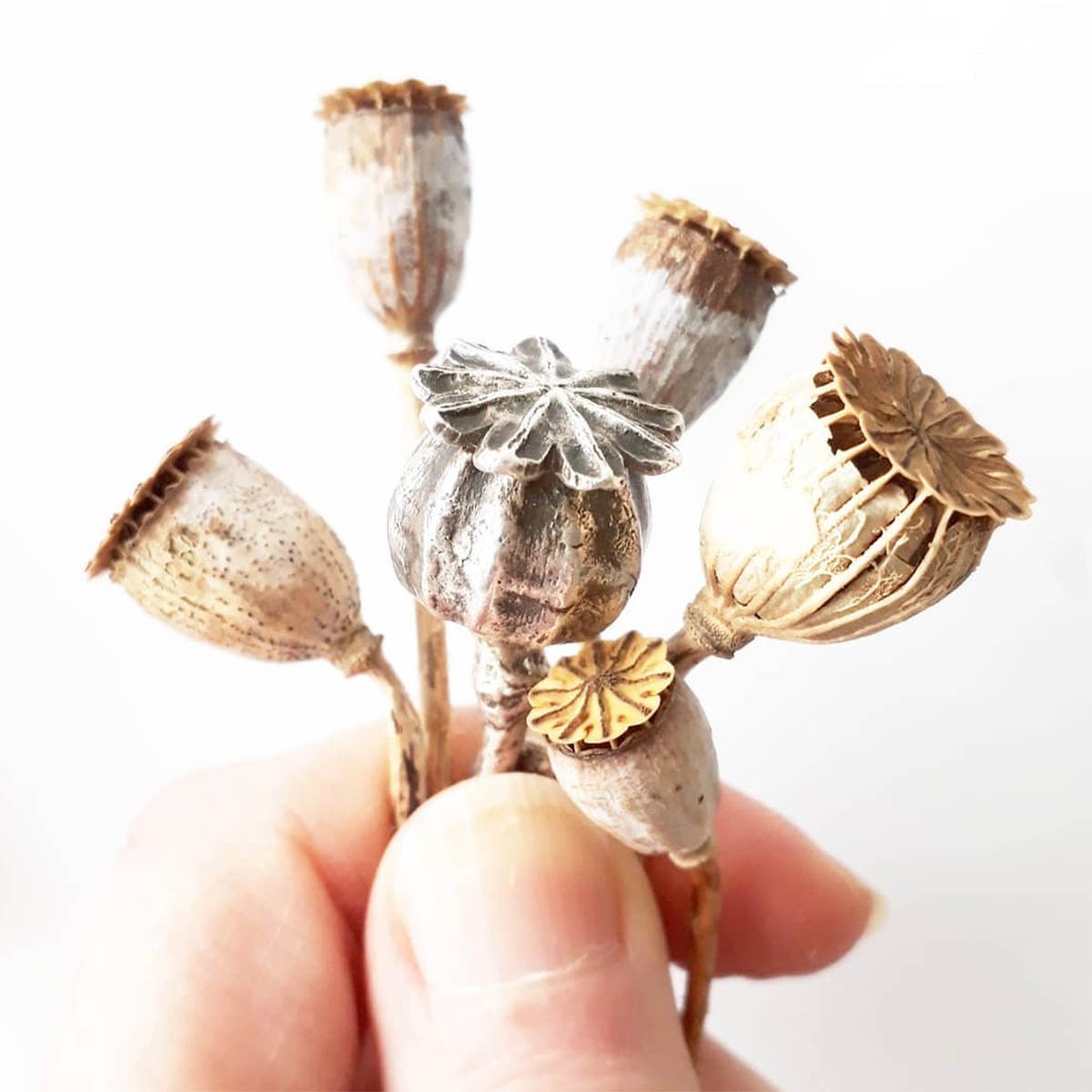Chatting To Truro College Exhibition Silversmith Winner, Esther Moore
We always look forward to Truro College of Art & Design's annual exhibition and we are thrilled to announce that Esther Moore was one of the winners! The Back For The Future event was held at Lemon Quay in Truro, Cornwall and was the 15th annual exhibition, we were also back to proudly sponsor the jewellery/silversmithing award. It's a brilliant exhibition, shining the spotlight on artists of the future who are taking their first steps into the creative industry.
We were so excited to invite Esther for an interview on our blog, where we chat all about the exhibition, learn more about the inspiration behind her designs, as well as hear all about her experience of studying with Truro College and what the future may hold. Plus you'll be able to see more of her incredible award-winning designs as well as more makes showcasing her talent.
Hi Esther, firstly congratulations on winning the Kernowcraft award at Truro College’s Back For The Future Exhibition! Please tell us more about the collection of work you exhibited.
For my exhibition collection of work, I fabricated a selection of insect pins that sit amongst vitreous enamelled leaves to form miniature habitats in glass domes.
The compilations are a way to express the interdependent relationships between plant and insect and how vital each is to our ecosystem, while allowing us to reconnect with nature in our homes.
I am very conscious of sustainable design within my work so each piece was made with recycled precious metals and press formed to create hollow insects, minimising the amount of metal while also enhancing visual simplicity to give each insect a ‘gentleness’.
How did you prepare for the exhibition?
The exhibition aligned with my final collection module for university, which I had been working on since January. I kept the exhibition date in mind while designing, often redesigning, model making and then constructing the pieces in silver and gold.
What was the inspiration behind your collection of work?
My dissertation heavily influenced my collection of work, it led me to discover that jewellery doesn’t have to be complex or functional to have a purpose. By simply being a visual representation of nature, it is able to reconnect people to the natural world, bringing a range of health benefits.
Visual arts also have the ability to communicate to vast audiences, through my work I hope to raise awareness and educate about the ever-declining insect population which combines my love of the natural world with my silversmithing and jewellery work.
"It felt pretty magical to construct a wearable ring from sheet and wire..."
Where did your interest in jewellery making come from?
From a very young age, I have enjoyed various arts and crafts, including painting, drawing, crochet, knitting, sewing, woodwork and ceramics.
My knowledge in ceramics led me into working with silver art clay, the similarities between these two mediums made precious metal jewellery making accessible to me. As much as I loved working in silver clay, it did have its limitations, this pushed me to use more traditional silversmithing techniques.
Tell us about the first piece of jewellery you ever made!
The first piece of jewellery I made was a simple bezel set ring, it taught me basic techniques such as sawing, filing, sanding, forming metal, soldering, stone setting and polishing. It felt pretty magical to construct a wearable ring from sheet and wire.
You also use sea glass in your work, why do you like using this material?
Sea glass is addictive to hunt for on beach walks, I love the fact that it was once something else, maybe a pirate bottle, medicine bottle or a lightbulb insulator. Unlike mined gemstones these colourful pieces are repurposed and don’t damage the earth.
Customers also like to find their own sea glass and have this set too; it holds a connection to their favourite beach or has been found on a special anniversary, this is a very personal and unique keepsake.
Learn more about stone setting and sea glass in Kernowcraft's advice page.
The Kernowcraft prize was a £50 gift voucher, what will you be putting this towards?
Firstly, thank you so much for my voucher, as I am just setting up my business it will really help with the basics although I do have a new ring design in mind so it may also be going towards some faceted moissanite.
Favourite gemstone and one you’d love to use in future designs?
At the moment, I like moissanite as they are an ethical alternative to diamonds and pair well with my silver and gold combinations. I do love the bright, juicy colours of tourmaline and think these would pair very nicely with my transparent enamels.
Why did you choose to do a jewellery/silversmithing degree course and how would you describe your experience?
I initially taught myself the basic silversmithing and jewellery techniques however I was eager to increase my skill set, while also wanting to develop my own unique style.
The jewellery and silversmithing course at Truro college was the perfect place to do this as it allowed me to continue working while studying. I loved my time on the course, I learnt a huge amount from skilled tutors in a supportive environment, with a wonderful group of other creatives.
Can you tell us more about what the course entails and whether you would recommend it to others?
The foundation degree (year one and two) involves learning techniques such as box making, raising, chain making, brooch making, enamelling, stone setting/advanced stone setting, chasing and repousse and batch production techniques as well as learning about marketing, photography, website building. Whereas the BA (Hons) third year has a big focus on developing your own practice both through practical and theory-based work.
"If you are looking to push yourself as a jeweller and silversmith in beautiful Cornwall,
I would definitely recommend the course!"
Do you like doing commissions and what’s one that comes to mind right now?
Commissions are always interesting as they are so varied. One that comes to mind is a reticulated silver ‘twig’ ring band with three rose gold ‘acorn cup’ granules the largest of which holding a 5mm white topaz.
Tell us about your workspace and how you make it your own!
My workshop is a converted room in my home, it holds my desk, my bench, wildlife and insect books, dried seed pods and leaves, a selection of dead insects (found, not killed) and houseplants! I like to collect things that inspire me and having these objects to hand when I am making gives me a visual reference.
I also upcycled my bench from an old mangle base, my grandad's old roll top desk, my gran's old kitchen table and made the oak leaf drawer pulls from an old copper boiler tank.
Tell us about the techniques needed for creating your impressive dragonfly figurine
My dragonfly figurine was created during my first year at university, it was a way to combine and explore new techniques, tools and processes.
I fell in love with the process of making tube. I started with large tube, cut pieces off then drew it down to decrease its size. I repeated this process several times to achieve the dragonfly tail. I made a template for the thorax, shaped this with a hammer over stakes, then domed discs into spheres for the head. The wings were pierced and connected to wire mechanics which enabled them to move when the legs were pulled.
How has the pandemic impacted your studies?
After starting university in 2019 we were all very unaware of what was to come. Like all other courses we had to adapt to online learning, this was difficult due to our course involving a lot of practical work. During our second-year lockdown our modules were reordered which enabled us to complete all of the theory while at home and then managed to complete all of our practical skills when we returned to university, I am grateful that we were one of the first courses to return as it meant that we didn’t miss out on any techniques. We did miss our first two end of year exhibitions, so the Back For The Future Exhibition was a new and exciting experience to all first, second and third year students!
How would you describe the creative community in Cornwall?
Cornwall is well known for its creative community, I have found everyone no matter what discipline to be helpful, supportive, and encouraging. People are always willing to share information with the less experienced maker.
"Cornwall influences my designs massively, the ever-changing seasons provide a magnitude of inspiration..."
How does living in Cornwall inspire your designs?
Cornwall influences my designs massively, the ever-changing seasons provide a magnitude of inspiration, from fluctuating colour palettes to the phenomenal diversity of plant and invertebrate species. There is always something new to look at, explore and discover.
Also in this section:
- Chatting To Truro College Exhibition Winner, Caitlin Haughton
- Mixed metals, textures and being inspired by outdoors with Lucy Spink Jewellery
- Magical Metal Clay, Love of Nature and Gems With Beaded Magpie
- Talking Wax Carving, Texturing & Otherwordly Jewellery With Zoë From Brother Banquo And Queen
- Talking Gold And Sand Casting With Billie Ellen Designs
- Meet The Jeweller: Talking Opal Obsession with Jenny from Sea Surf Rocks
- Chatting To Truro College Exhibition Silversmith Winner, Olivia English
- Day In The Life Of Cornish Eco Jeweller Sarah Drew Jewellery
- Wax Carving, Metal Clay & Coastal Designs With Rockpool Jewellery
- Colourful Jewels, Cornish Inspiration & Ring Love With Marsha Drew
- Chatting Unique Nature Inspired Designs & Intricate Sawing With HISO
- Anxiety Jewellery & Favourite Gems With Rozen Jewellery
- Day In The Life Of A Jeweller With Gretel's Metals
- Sea Glass, Healing Gemstones & Cornish Coastal Inspiration With Ula Jewellery
- ‘A Heart of Gold’ Jewellery Collaboration, Raising Awareness of Heart Disease in Women
- Stone Setting, Diamonds & Jewellery Design With Goldsmith Sonia Cheadle
- Magical Metal Clay, Nature & Gems With Susan Studd
- Chatting To Truro College Exhibition Silversmith Winner, Esther Moore
- Handmade Jewellery Inspired By Japanese Heritage & Philosophy With Kumiko
- Creating Unique Jewellery Collections With Gem Lark Jewellery
- Crystal Jewellery With Jessica From 'Roses & Whiskey'
- Statement Crystal Jewellery With FIRENZA
- Electroplating & Crystals With Studio Roan
- Chatting Beading & Wirework With Author & Tutor Sara Withers
- A Day In The Life With Soul Purpose Jewellery
- Meet Jeweller, Tutor & Author Anastasia Young
- A Day In The Life Of A Jeweller With Basia From Stardust Mine Jewellery
- Meet The Jeweller, Author & Tutor Jinks McGrath
- Meet The Maker Transforming Coins & Scrap Metal Into Fun Characters
- Behind the Scenes At The Jewellers Retreat - An Interview With Jessica Rose
- Combining Skills Of Illustration & Metalsmithing With The Sylvan Smith
- Magical & Whimsical Jewellery With Manom Jewellery
- How To Work With Gemstones As A Jeweller With Gemmologist Sally Spencer
- Sea Glass, Personalisation & Christian Jewellery With Jordan Lily
- Chatting Beads, Etsy & Social Media With Emma From Evren Blue
- Garden Studio Tour, Jewellery Making & Packaging With Little Black Cat Jewellery
- Jewellery Inspired By Cornwall, Magic & Myth With Gemheaven Jewellery
- Sand Casting Silver Cockle Shells & Nature Inspired Jewellery With Anna Davenport
- Day In The Life Of Running A Sea Glass Jewellery Business With Created By Niki
- Leo + Elk On Running A Family Business During A Pandemic
- A Day In The Life Of A Jeweller: Finding Normality Again With Kim Thomson
- Gemstone, Body Positivity & Black Lives Matter Designs With 'Jewellery By Eilatan'
- Meet The 'All That Glitters' Contestants Of Series 1
- Briolette Jewellery, Etsy & Learning With Ocean & Earth Jewellery
- What's Inside A Travelling Jeweller's Briefcase?
- Combining Sea Glass & Diamonds With Glasswing Jewellery
- Bohemian Luxe Handmade Jewellery With 'Feathers And Wings'
- Diamonds & Granulation With Milly Maunder
- Then & Now, Jewellery Through The Ages With Sam Stirrat
- Contemporary Engagement Rings With William White
- Designing An Engagement Ring With Guest Writer Sea Surf Rocks
- Meet The Jeweller & Author Of 'Soldering For Jewellers' Rebecca Skeels
- Jewellery Making Notebook Tour With Jasmine Butler
- Running A Handmade Jewellery Business During A Pandemic With 'Louy Magroos'
- Home Jewellery Studio Tour & Top Tips With Jodie Fern
- Let's Talk Business With Jeweller & Tutor, Karen Young
- Nature & Mental Health Jewellery With Lost Kove
- Meet The Jeweller Behind Hazey Designs
- Jewellery Making Storage Tour With Scruffy Dog Silver
- Meet The Beader Behind Dainty Rocks
- Jewellery Workshop Tour With Little Silver Star
- Mindful Gemstone Jewellery With The Sea Tree Company
- Let's Talk Sea Glass Jewellery With Sadie Jewellery
- Chatting Beads & Growing A Jewellery Business With Liz Lloyd
- Beading With Carolyn Anne Jewellery
- Jewellers Of Colour: Connecting BAME Jewellers In The Jewellery Industry
- Meet The Self-Taught Jeweller Behind Corzana
- Meet The Jeweller Behind The Messy Creative
- Handmade Button Jewellery With Crafty Little Koala
- Beautiful Gemstones For Beautiful Skin With Inlight Beauty
- Meet The Boho Jeweller Behind Moonsalt Jewellery
- Etsy Success & Personalisation With Little Homebird Jewellery
- How Jewellery Making Has Helped My Chronic Illness & Mental Health
- Jewellery Making With Nature's Treasures
- Meet Illustrator & Polymer Clay Jeweller, Nyassa Hinde
- Jewellery Trade Secrets With Metalsmith Society
- Sea Glass Jewellery & Launching A Business With Love Kernow
- Meet The Jeweller Behind London Jewellery School & Jewellers Academy
- Meet Stephen Goldsmith, Author Of Polishing & Finishing For Jewellers
- Resin, Flower & Gemstone Jewellery With Ellanor Aquitaine
- Meet The Jeweller Behind Trinkets By Moonlight
- Meet The Self-Taught Jeweller Behind Olivia Street Silver
- Personalised Handmade Jewellery With Ruby & Wonder
- Meet The Cosmic Jeweller, Vikki Hall
- Meet The Eco-Friendly Jeweller, Jemima Hurlock
- Meet The Cornish Jeweller, Thomas Matthews
- Beachcombing & Jewellery Making With Cornish Agates
- Festival & Boho Jewellery With Tegen
- Mokume Gane & Vessel Pendants With Nicola Bottono
- Meet The Jeweller Behind View Of The Sea
- Artists Residency With Jeweller, Jonathan Videgrain
- Meet The Jeweller & Gemstone Addict Behind Made By Oonagh
- Pre-Loved, Vintage Jewellery With Ella Masters
- Baker's Dozen Exhibition With Sarah Shelton-Palmer
- Meet The Jeweller, Tansy Wilson
- Celestial, Boho & Witchy Jewellery With Amber Wheatley Designs
- Let's Talk Metal Clay With Lisa Cain
- Meet The Jeweller Behind When Caitie Met Soda
- Make It Challenge: Recycling The Same Piece Of Silver For 100 Days
- Bespoke Engagement Rings With Blackacre
- Meet The Jeweller Behind Claire Howard Jewellery
- Meet The Jeweller Behind Award Winner Andrew Berry
- Meet The Nature Inspired Jeweller Behind Lima-Lima
- Creating An Opal Ring & Pendant With Little Joy Jewellery
- Jewellery Inspired By Your Home With Claire Halligan
- Award Winner Monique On Techniques & Cornish Inspiration
- Meet The Jeweller Jonathan Videgrain
- Meet The Jeweller Louella Jewellery
- Meet The Jeweller Behind Bijoux De Chagall
- Alternative Wedding Jewellery With Bloody Mary Metal
- Jeweller Chloe Michell Talks Working With Metal Clay, Tools and Inspiration
- Setting Up Your Work Bench With Jeweller Victoria Walker
- An Interview With NAJ Shortlisted Designer of the Year Sheila Kerr

